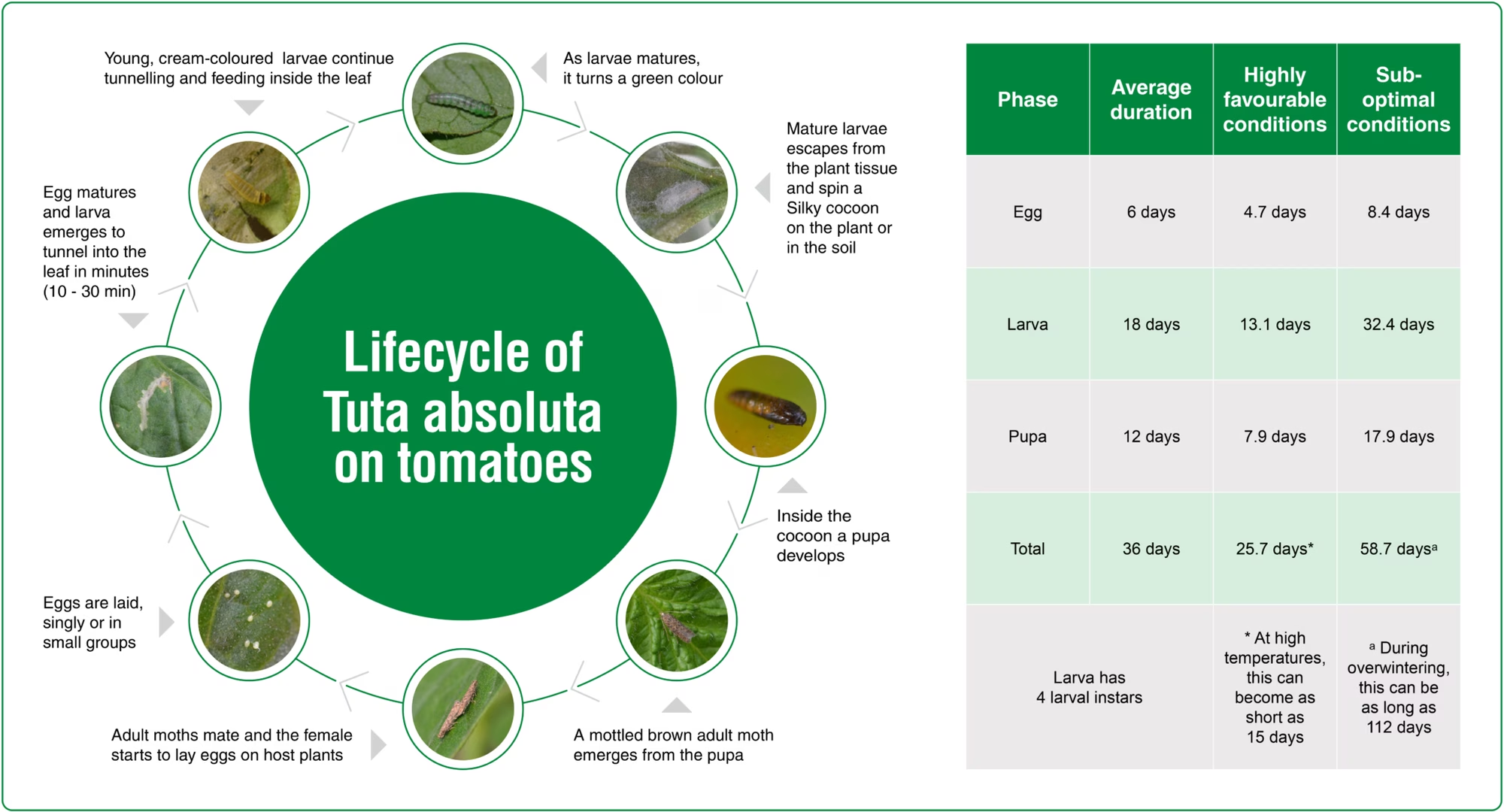Tuta absoluta, the tomato leafminer moth, has become an increasingly important pest in South Africa since 2016, undermining tomato production. Farmers have suffered serious yield losses, and increased expenditure in their attempts to control the pest.
This insect can reproduce at an alarming rate during warm to hot conditions (15 days per cycle at 35°C). Since the larvae tunnel into a tomato plant’s leaves as soon as they emerge from their protective egg cases, they easily escape contact insecticide applications. A completely integrated pest management (IPM) programme is the only effective means offering sustainable control of Tuta absoluta.
Several principles have to be strictly followed in an IPM programme:
Sanitation is extremely important and involves the removal of leaves when the first signs of feeding damage is noticed. This should only be practised up to a point. Plants must not be debilitated by excess loss of leaf area or so that fruit suffers sunscald.
At the end of the season, plants and all plant material must be removed as soon as possible and buried to prevent new moths emerging from pupae in or on the plant material. A host-free period of about six weeks will further reduce the number of moths when the season starts.
Weed control of especially solanaceous weeds (thorn apple, nightshade, bitter apple) and crop rotation out of the potato family (potato, tobacco, pepper, eggplant, tomato, gooseberries) should help break the pest cycle.
Early detection using pheromone delta traps, mass traps (~40 per ha installed 80 cm above ground, even before transplant) and black or yellow sticky traps can give an early indication of increases in pest populations. Traps can also reduce the population of male moths. Insect-attracting ultraviolet light systems used at night in closed greenhouses can further reduce the moth populations.
Biological control might not be the fastest-acting control measure, but it is one of the most sustainable. These eco-friendly products range from bacteria (e.g. Bacillus thuringiensis, Paenibacillus chitinolyticus), fungi (e.g. Beauveria bassiana, Metarhizium spp.) and granuloviruses that will infect the moths and larvae, to parasitic insects and nematodes that will feed on the pest and reduce populations.
Chemical control is probably the most favoured measure of most farmers, but care must be taken to prevent pests from developing resistance to the products, something for which Tuta absoluta is renowned. Spray application can be improved by pruning plants to two leaders and allowing better cover on the developing fruit. Principles to follow in chemical control of Tuta absoluta include:
- An anti-resistance management programme allowing block sprays of two applications of a chemical from a specific mode of action (MoA – referring to specific IRAC codes); alternation should allow for at least 60 days between chemicals from the same MoA
- Always check the label of the chemical to determine its optimal pH, and adjust the spray mix accordingly (spray water quality is very important)
- Use only registered chemicals and adhere to the relevant label dosages. This prevents under- or overdosing of a chemical
- Utilise improved stickers or wetting agents to improve application efficacy
- Eco-friendly chemicals that don’t kill beneficial insects should be preferred to the older, harsher alternatives
An environmentally friendly approach to farming will lead to wider biodiversity and the proliferation of the natural enemies of Tuta absoluta, including insect-eating birds and bats.
